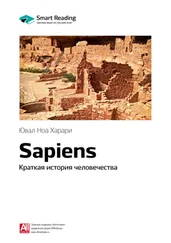Again, some scholars try to exonerate Homo sapiens and blame climate change (which requires them to posit that, for some mysterious reason, the climate in the Caribbean islands remained static for 7,000 years while the rest of the western hemisphere warmed). But in America, the dung ball cannot be dodged. We are the culprits. There is no way around that truth. Even if climate change abetted us, the human contribution was decisive. 7
Noah’s Ark
If we combine the mass extinctions in Australia and America, and add the smaller-scale extinctions that took place as Homo sapiens spread over Afro-Asia – such as the extinction of all other human species – and the extinctions that occurred when ancient foragers settled remote islands such as Cuba, the inevitable conclusion is that the first wave of Sapiens colonisation was one of the biggest and swiftest ecological disasters to befall the animal kingdom. Hardest hit were the large furry creatures. At the time of the Cognitive Revolution, the planet was home to about 200 genera of large terrestrial mammals weighing over fifty kilograms. At the time of the Agricultural Revolution, only about a hundred remained. Homo sapiens drove to extinction about half of the planet’s big beasts long before humans invented the wheel, writing, or iron tools.
This ecological tragedy was restaged in miniature countless times after the Agricultural Revolution. The archaeological record of island after island tells the same sad story. The tragedy opens with a scene showing a rich and varied population of large animals, without any trace of humans. In scene two, Sapiens appear, evidenced by a human bone, a spear point, or perhaps a potsherd. Scene three quickly follows, in which men and women occupy centre stage and most large animals, along with many smaller ones, are gone.
The large island of Madagascar, about 400 kilometres east of the African mainland, offers a famous example. Through millions of years of isolation, a unique collection of animals evolved there. These included the elephant bird, a flightless creature three metres tall and weighing almost half a ton – the largest bird in the world – and the giant lemurs, the globe’s largest primates. The elephant birds and the giant lemurs, along with most of the other large animals of Madagascar, suddenly vanished about 1,500 years ago – precisely when the first humans set foot on the island.
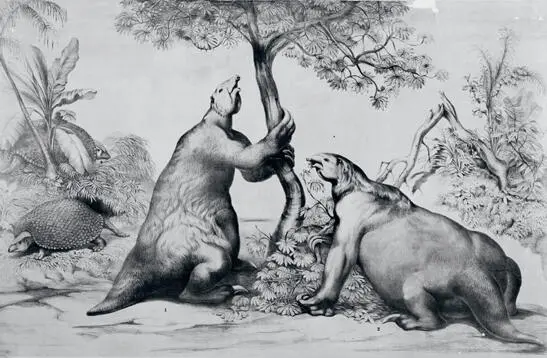
10. Reconstructions of two giant ground sloths (Megatherium) and behind them two giant armadillos (Glyptodon). Now extinct, giant armadillos measured over three metres in length and weighed up to two tons, whereas giant ground sloths reached heights of up to six metres, and weighed up to eight tons.
In the Pacific Ocean, the main wave of extinction began in about 1500 BC, when Polynesian farmers settled the Solomon Islands, Fiji and New Caledonia. They killed off, directly or indirectly, hundreds of species of birds, insects, snails and other local inhabitants. From there, the wave of extinction moved gradually to the east, the south and the north, into the heart of the Pacific Ocean, obliterating on its way the unique fauna of Samoa and Tonga (1200 BC); the Marquis Islands (AD 1); Easter Island, the Cook Islands and Hawaii (AD 500); and finally New Zealand (AD 1200).
Similar ecological disasters occurred on almost every one of the thousands of islands that pepper the Atlantic Ocean, Indian Ocean, Arctic Ocean and Mediterranean Sea. Archaeologists have discovered on even the tiniest islands evidence of the existence of birds, insects and snails that lived there for countless generations, only to vanish when the first human farmers arrived. None but a few extremely remote islands escaped man’s notice until the modern age, and these islands kept their fauna intact. The Galapagos Islands, to give one famous example, remained uninhabited by humans until the nineteenth century, thus preserving their unique menagerie, including their giant tortoises, which, like the ancient diprotodons, show no fear of humans.
The First Wave Extinction, which accompanied the spread of the foragers, was followed by the Second Wave Extinction, which accompanied the spread of the farmers, and gives us an important perspective on the Third Wave Extinction, which industrial activity is causing today. Don’t believe tree-huggers who claim that our ancestors lived in harmony with nature. Long before the Industrial Revolution, Homo sapiens held the record among all organisms for driving the most plant and animal species to their extinctions. We have the dubious distinction of being the deadliest species in the annals of biology.
Perhaps if more people were aware of the First Wave and Second Wave extinctions, they’d be less nonchalant about the Third Wave they are part of. If we knew how many species we’ve already eradicated, we might be more motivated to protect those that still survive. This is especially relevant to the large animals of the oceans. Unlike their terrestrial counterparts, the large sea animals suffered relatively little from the Cognitive and Agricultural Revolutions. But many of them are on the brink of extinction now as a result of industrial pollution and human overuse of oceanic resources. If things continue at the present pace, it is likely that whales, sharks, tuna and dolphins will follow the diprotodons, ground sloths and mammoths to oblivion. Among all the world’s large creatures, the only survivors of the human flood will be humans themselves, and the farmyard animals that serve as galley slaves in Noah’s Ark.
Part Two
The Agricultural Revolution
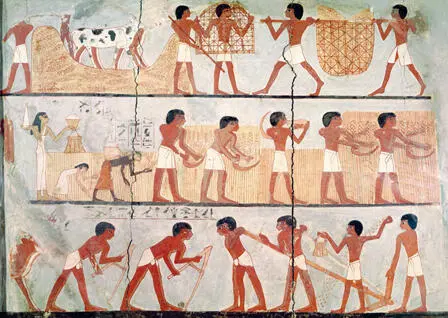
11. A wall painting from an Egyptian grave, dated to about 3,500 years ago, depicting typical agricultural scenes.
5
History’s Biggest Fraud
FOR 2.5 MILLION YEARS HUMANS FED themselves by gathering plants and hunting animals that lived and bred without their intervention. Homo erectus , Homo ergaster and the Neanderthals plucked wild figs and hunted wild sheep without deciding where fig trees would take root, in which meadow a herd of sheep should graze, or which billy goat would inseminate which nanny goat. Homo sapiens spread from East Africa to the Middle East, to Europe and Asia, and finally to Australia and America – but everywhere they went, Sapiens too continued to live by gathering wild plants and hunting wild animals. Why do anything else when your lifestyle feeds you amply and supports a rich world of social structures, religious beliefs and political dynamics?
All this changed about 10,000 years ago, when Sapiens began to devote almost all their time and effort to manipulating the lives of a few animal and plant species. From sunrise to sunset humans sowed seeds, watered plants, plucked weeds from the ground and led sheep to prime pastures. This work, they thought, would provide them with more fruit, grain and meat. It was a revolution in the way humans lived – the Agricultural Revolution.
The transition to agriculture began around 9500–8500 BC in the hill country of south-eastern Turkey, western Iran, and the Levant. It began slowly and in a restricted geographical area. Wheat and goats were domesticated by approximately 9000 BC; peas and lentils around 8000 BC; olive trees by 5000 BC; horses by 4000 BC; and grapevines in 3500 BC. Some animals and plants, such as camels and cashew nuts, were domesticated even later, but by 3500 BC the main wave of domestication was over. Even today, with all our advanced technologies, more than 90 per cent of the calories that feed humanity come from the handful of plants that our ancestors domesticated between 9500 and 3500 BC – wheat, rice, maize (called ‘corn’ in the US), potatoes, millet and barley. No noteworthy plant or animal has been domesticated in the last 2,000 years. If our minds are those of hunter-gatherers, our cuisine is that of ancient farmers.
Читать дальше
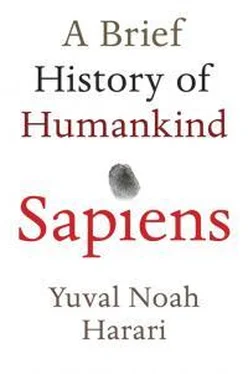




![Юваль Ной Харари - Sapiens. Краткая история человечества [litres]](/books/34310/yuval-noj-harari-sapiens-kratkaya-istoriya-cheloveche-thumb.webp)
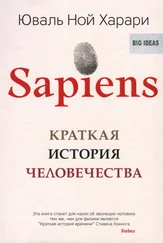


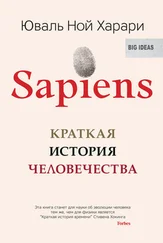

![Юваль Ной Харари - 21 урок для XXI века [Версия с комментированными отличиями перевода]](/books/412481/yuval-noj-harari-21-urok-dlya-xxi-veka-versiya-s-ko-thumb.webp)


